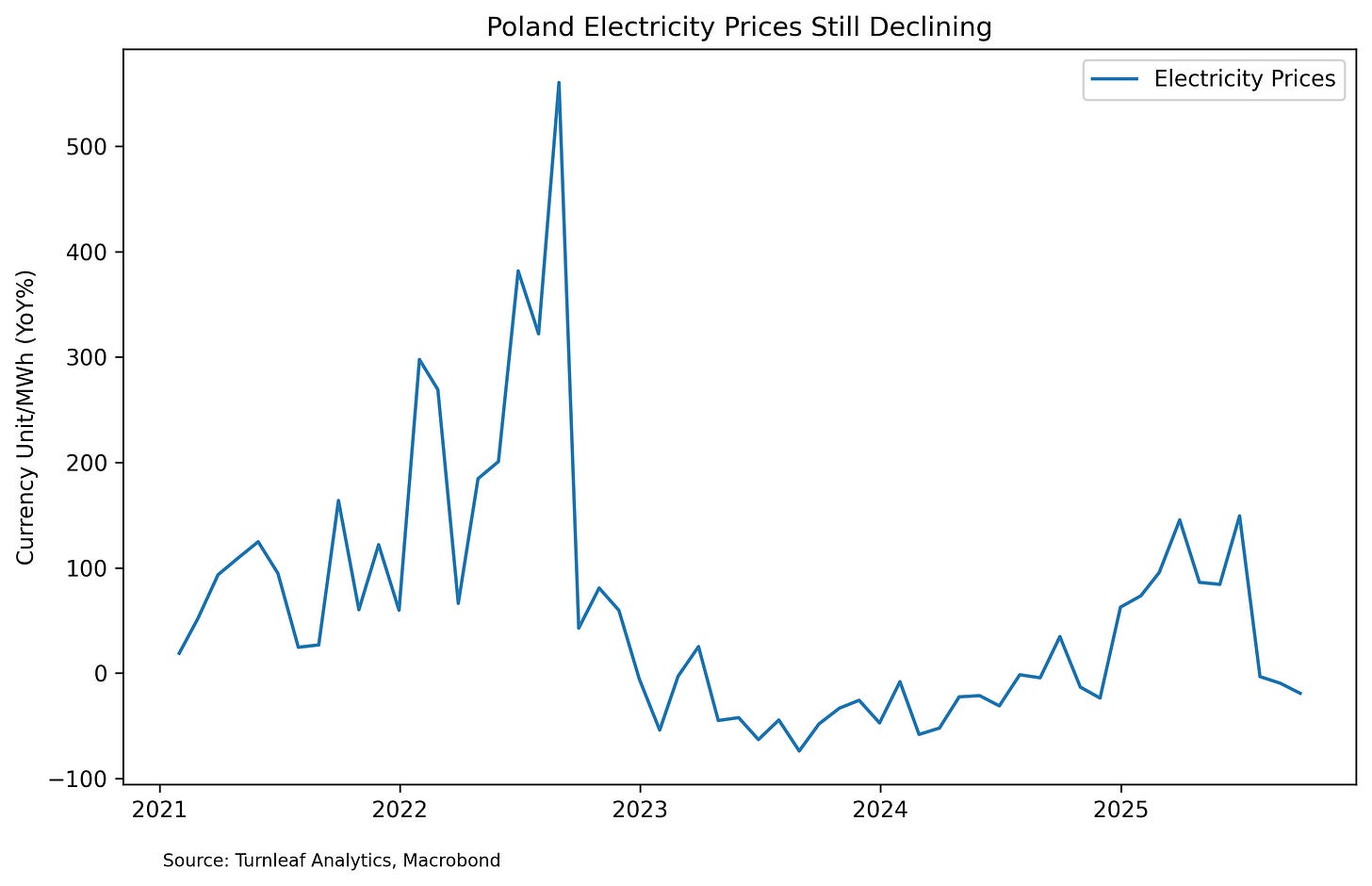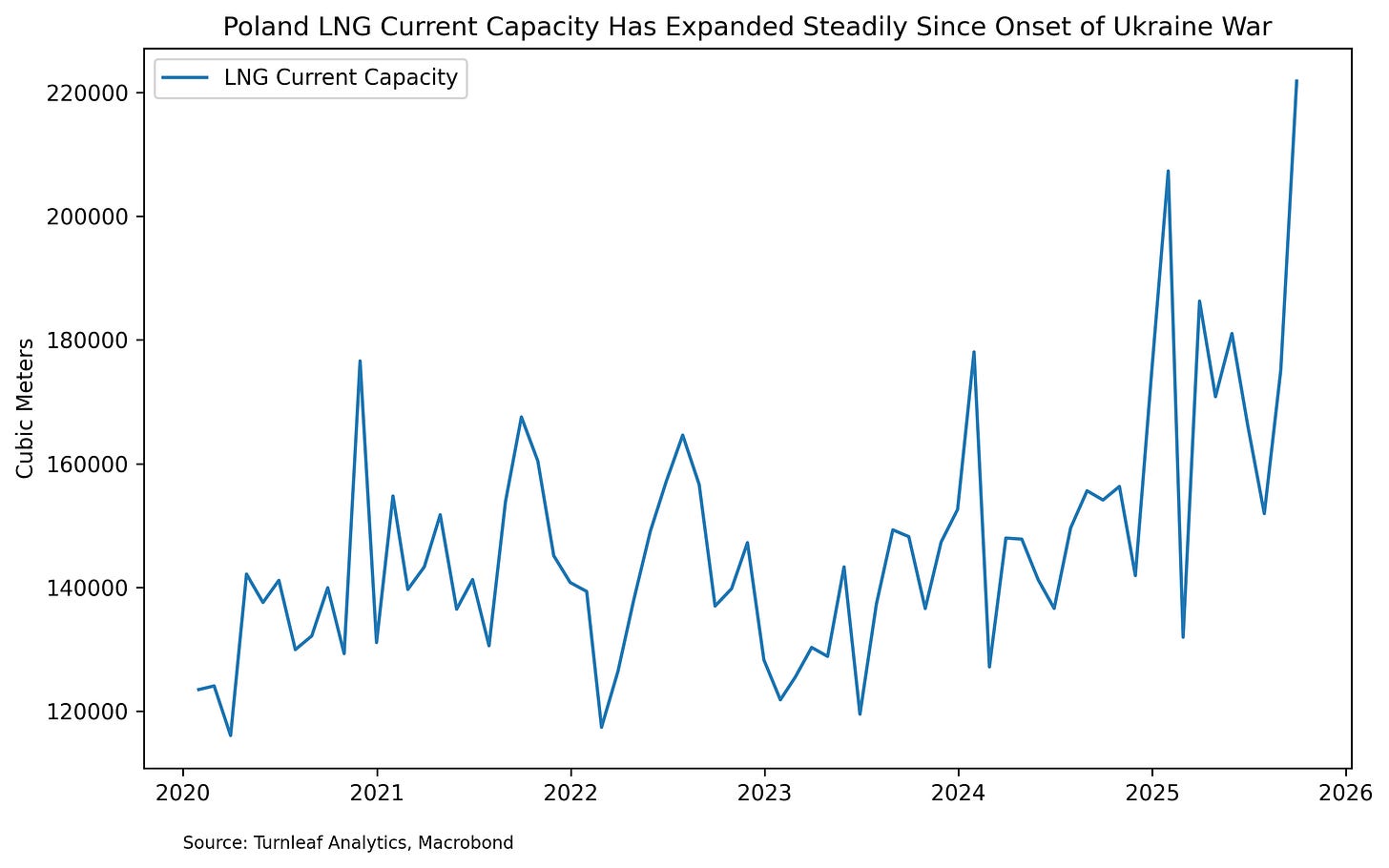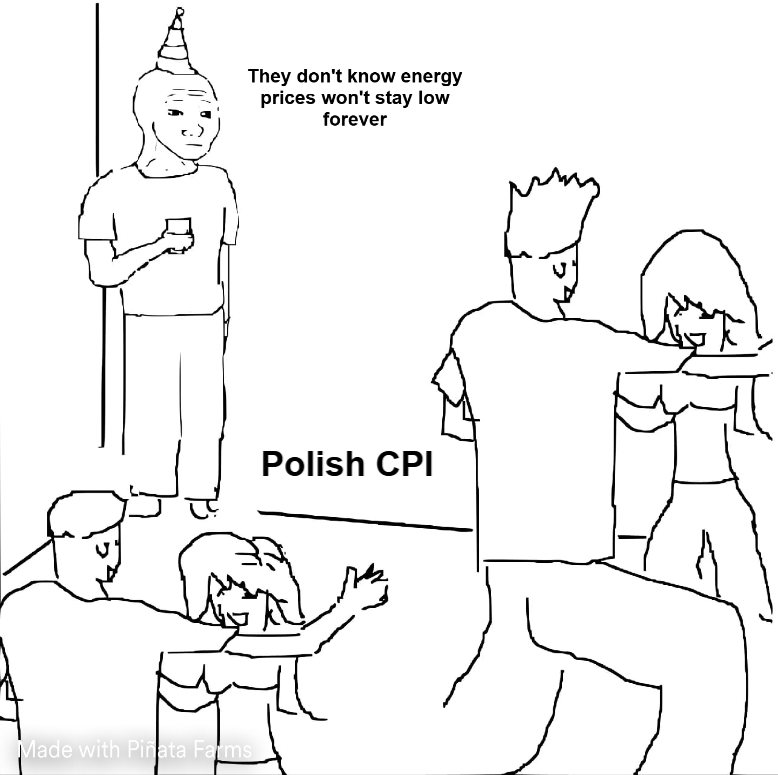Turnleaf expects Poland’s CPI to average around 3% YoY over the next 12 months. By 2026, the base effects from the 2024 energy surge will fade, leaving food and services as the primary inflation drivers (Figure 5 – paywall). Food prices are expected to remain elevated due to global supply constraints, while services inflation will stay sticky due to ongoing wage pressures, despite some moderation. A temporary dip to 2.5% in early 2026 is likely as service base effects fade, but inflation should return to 3% later in the year, driven by seasonal energy demand and firmer food prices. From 2026 onward, excise taxes and administered price changes will continue to pressure inflation, while slowing wage growth may moderate services inflation somewhat. Core goods inflation, however, will remain subdued due to weak industrial demand and global disinflationary trends. Supply shocks, particularly in energy, food, and services, represent a key upside risk to inflation, as disruptions in supply chains or geopolitical tensions could drive prices higher than expected.
High food prices in recent months raised concerns about a sustained inflation uptick for September 2025. However, food prices increased much less than expected. Our model identified several key contributors to the inflation print, including higher beef and golden apple prices, likely driven by a global trend of declining livestock supply and seasonality, respectively, which has pressured prices.
The electricity price cap in Poland, initially set to end by October 2025, has been extended through the end of the year, helping to keep electricity prices subdued for the foreseeable future (Figure 1). Meanwhile, fuel costs remain low due to a drop in global Brent crude prices. However, upside risks remain, particularly if geopolitical tensions or supply disruptions drive prices up in the latter half of 2025 or into 2026.
Figure 1

As part of its strategy to decouple from Russian gas, Poland has focused on expanding LNG capacity to diversify its energy mix and ensure greater energy security (Figure 2). However, with favorable base effects from high energy prices fading from the 2026 inflation calculations, gas prices could rise again if supply conditions do not improve. While the expansion of LNG infrastructure is a positive step, Poland’s energy future will depend on securing consistent and affordable energy supplies, with risks of price volatility if supply disruptions or insufficient capacity arise.
Figure 2

